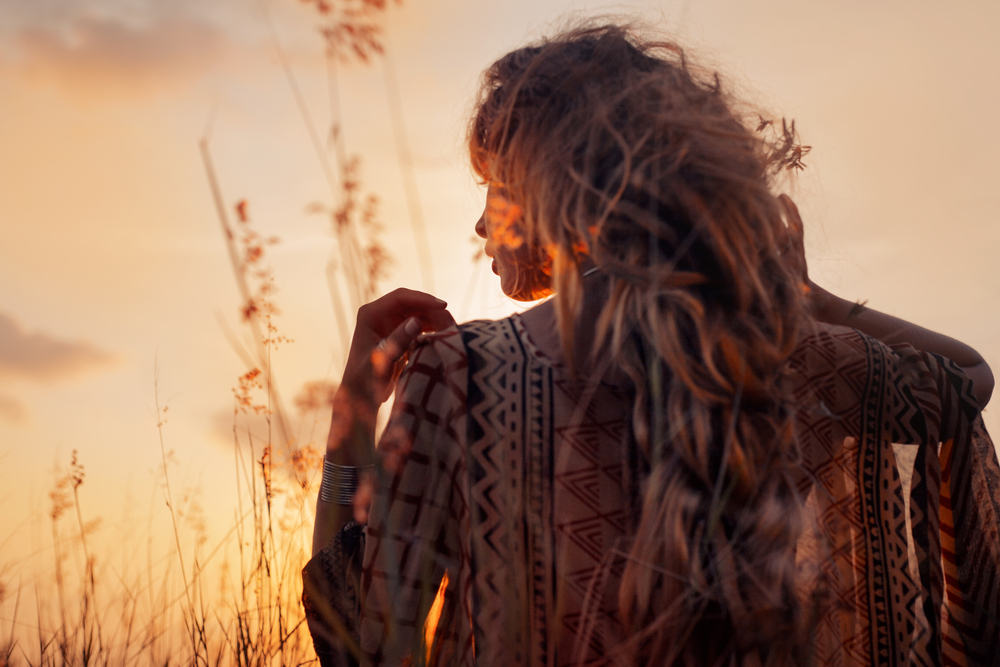
22 Jan Back to our Roots: Herbal Hair Dyes
Humans have been making use of Mother Nature and all her natural secrets for thousands of years, from the air we breathe to the nutrients we gain from the foods she provides. One such natural gem is different plants and their ability to dye our hair and skin. Two such plant dyes, and the most well-known ones, are indigo (Indigofera tinctoria) and henna (Lawsonia inermis), which are still used today as effective hair dyes and conditioners. And as only Mother Nature can provide, it is now becoming more widely known that these plants not only colour and condition hair but also benefit the whole body.
Henna maintains the acid-alkaline balance of the scalp that helps to eliminate dandruff, itchiness and premature hair loss. It binds to the keratin protein in hair and colours hair by coating each strand in a protective film. This seals and repairs the hair cuticle, reducing breakage and giving hair a lovely shine.
Henna is not only good for hair though, it can be used to cool burns and sooth ringworm, eczema and fungal infections. Indigo has been used for centuries in Ayurvedic medicine to treat depression and to detoxify the liver. A simple paste made from its leaves helps heal sores and ulcers.
When henna and indigo are used together, they work synergistically to dye hair in rich shades of red to black.
Of course, our quick fix culture puts a higher demand on, well, everything. The same is true with hair dye. Chemical hair dyes came about as a solution to this quick fix desire and have been around for just over 150 years. Chemical hair dye has fast action and colour reliability; especially when covering grey hair, but these come with a price of possible health problems and allergic reactions.
However, as we move into a time when we realise that our health is the one true thing that we have full control over, and as we create awareness around those things that are harmful to us, more people want to switch to healthier options to colour their hair. These options include 100% herbal hair dyes (which rely on henna and indigo to colour the hair) and low chemical hair dyes that have been formulated with the lowest possible concentrations of chemicals.
It helps to be informed about hair dye chemicals so that the best choices can be made. All chemical hair dyes contain one or more of the Para-dyes. This is unavoidable unfortunately. Chemicals such as para- phenylenediamine and M-aminophenol are Para-dyes and will trigger adverse reactions in anyone sensitive to this group of chemicals. Choose a low chemical hair dye that has the lowest concentrations of Para-dyes possible.
Common hair dye chemicals which you can avoid entirely are ethanolamine, all the resorcinol chemicals, toluene chemicals, naphthol and ammonia. These are known carcinogens and hormone-disruptors and have no place on our hair!
Luckily, we are able to bring you a 100% herbal solution to any hair colouring desires with products like Love My Hair. The certified organic 100% Herbal hair dyes contain no chemicals at all, just henna, indigo and five wonderful Ayurvedic herbs to colour and condition your hair and scalp. The Low Chemical hair dyes contain only seven chemicals in extremely low quantities, as well as five certified organic Ayurvedic herbal extracts.
Using herbal and low chemical hair dyes has many advantages. There is no doubt that using plant extracts to dye and condition our hair not only nourishes our hair and scalp, it also helps to reduce the chemical load on our bodies and the environment. This can only bring good health!
How the Cape Town Drought Saved my Hair: A Quick Guide to Oil Training



Ginger
Posted at 14:50h, 19 FebruaryI’m using herbal hair dyes for a while and can say that once you try it you’ll love it.
FUE transplant hair in Islamabad
Posted at 13:59h, 19 JuneWell it directly before a family supper. I thought I looked stunning; that I’d truly nailed the entire no cosmetics look before it was mainstream.